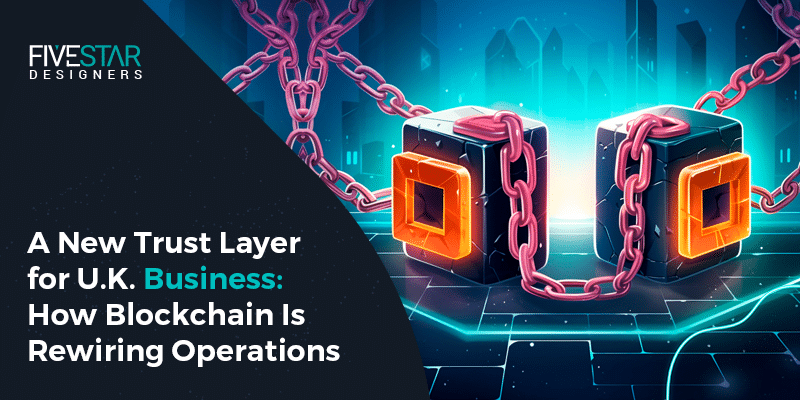When we first think of the word “Blockchain”, our minds immediately snap to cryptocurrencies, but the truth is, blockchain technology goes well beyond just that.
Blockchain tech is also utilized in modular infrastructure enterprises to carry out complex automations and adapt for verifiable workflows. The basic rules consist of an application-only record that is encrypted through specific rules. However, the logical proofs ensure control without the need for a central government.
Renowned companies have been utilizing blockchain for their businesses for some time. Let’s see how blockchain makes a difference in their operations.
Permissioned versus Permissionless Networks
There are two different types of shared digital records (ledgers):
- Controlled (Permissioned): A group of companies controls who can use it and how it’s run. This is more common for businesses.
- Open (Permissionless): Anyone can join and use it without needing approval, and it’s very hard for anyone to block users.
These different designs lead to different risks and different legal rules they must follow.
Consensus primitives and tokenization
Different computer systems process transactions at different speeds and have different rules for when a payment is truly “final.”
Blockchain networks have different speeds and security levels. Tokenization turns real-world assets into tradable digital items. Together, they let developers build smart contracts that automatically execute deals.
Practical Deployments
These days, companies prefer results quickly. Hence, making theory testing with experimental findings obsolete throughout the market. It is now expected that installations will concentrate on reducing and simplifying automated processes
Programmable Finance and Settlement
In capital markets and payments, programmable contracts remove Agents for routine processes. Banks and clearing entities explore smart contract development for conditional settlement and corporate actions automation to compress settlement windows and remove manual touchpoints.
Provenance, tracking, and logistics
Supply chain groups anchor cryptographic identifiers to physical events and record them immutably. That ledger-backed visibility reduces inventory loss and speeds regulatory audits, creating a single source of truth for origin claims.
Tokenized Real Estate and Fractional Ownership
Real estate workflows are reconceived through tokenized deeds and automated escrow execution. Fractional ownership models open liquidity for assets that were previously illiquid. DApp developers are building compliant marketplaces and custody layers to align with KYC and custody obligations.
Corporate Pilot Case Studies
Some U.S. businesses have already scaled pilots into real products. A manufacturer used a permissioned ledger to reconcile supplier invoices and shrink exception rates. A regional bank adopted programmable settlement logic to net bilateral exposures more frequently.
Those examples show that blockchain for business can deliver measurable results when domain expertise pairs with disciplined engineering.
Why Corporations Are Betting on Distributed Ledgers
When deployed deliberately, decentralized app solutions unlock efficiency while preserving auditability. Organizations find near-term wins in reconciliation, provenance, and automated escrow, and longer-term optionality across their tech stack.
Operational Resilience and Cryptographic Provenance
Immutable records strengthen forensic capability. When incidents occur, engineers can trace causality via cryptographic proofs rather than relying on imperfect manual logs. That clarity shortens investigations and reduces regulatory risk.
Cost Rationalization Through Automation
The on-chain business concept eliminates repetitive reconciliation tasks. A blockchain app development company will often integrate APIs and middleware to bridge legacy systems, yielding labor savings and fewer exceptions.
Teams that lack internal expertise frequently engage external partners or hire experienced DApp developers to accelerate delivery.
Where Blockchains Still Fall Short
Novel infrastructure brings trade-offs. Decision makers must weigh throughput constraints, regulatory uncertainty, and integration complexity against the expected benefits.
Scalability and Throughput Constraints
Public networks typically struggle with very high transaction volumes and predictable latency. Layer 2 rollups and hybrid architectures mitigate scale limitations, but they introduce additional operational surfaces and new failure modes.
Uncertainty in Regulations
Even though blockchain technology has been around for quite a while, it is not properly regulated, and there are still grey areas and unclear payment laws regarding tokenized instruments and automated settlement.
Integration with Legacy Systems
Most businesses operate on large ERPs and middleware that utilize non-standardized, formatted data structures, which necessitate the rewiring of such systems to distributed ledgers. It requires canonical data models and dependable oracles that attest to off-chain events without creating new single points of failure.
Development for Decentralized Enterprise in the U.K.
Adoption will accelerate where developer ergonomics and policy clarity intersect. The next phase depends on common protocols and a deeper ecosystem of practitioners and tools.
Interoperability and composable stacks
Shared standards for identity and asset representation let different platforms interlock. Interoperability reduces lock-in and makes reusable components realistic for firms building decentralized app solutions.
Talent and Developer Experience
DApp developers need strong SDKs and safer smart contract languages to reduce deployment risk. Better debugging tools and testing frameworks shorten iteration cycles and boost confidence in production.
Investment in cross-functional teams helps translate cryptographic primitives into product requirements and real business value.
Practical capability checklist
- Clear governance model for node operators.
- Defined oracle strategy with fallback attestations.
- Formal audit process for smart contract development and independent review.
Wrap Up
Blockchain is not particularly a new trend, but its potential helps in laying the foundation for a new and highly coordinated system capable of exchanges, tracking, and verifying state.
U.S. enterprises neglect blockchain integration to deal with verifying and matching transactions in a unified system, which is cost-effective and time-efficient.
Few app development agencies can execute blockchain integration as smoothly as specialized blockchain app development companies that harness the promise through proactive regulatory engagement and disciplined engineering.
FAQs
What are the pros of a private blockchain for businesses?
It allows a group of trusted partners to work together on a shared, secure system. They control all paperwork and disputes.How does blockchain assist with tracking products?
It creates a “golden record” that no one can alter, so you can trace a product’s journey from start to finish, eliminating confusion and building trust with customers.What are the things holding business blockchain back right now?
The biggest hurdles are fitting it into older computer systems, unclear government rules, and making sure it can handle massive amounts of data smoothly.



